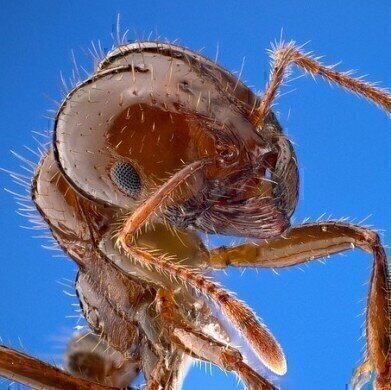HPLC, UHPLC
What Messages Lie within Ant Vomit? — Chromatography Explores
Dec 21 2016
One of the wonders of the animal world — how do the huge number of insects found in bee-hives and ant nests communicate with each other. Somehow, thousands of insects live in harmony and work collectively and as individuals to gather food, help the colonies young to grow and thrive and work together to repel any attackers that are foolish enough to attack their home.
There are various methods of communication used by social insects like ants and bees — pheromones, sound and touch are three examples that have been explored. But research suggests that ants talk to each other using their mouths too.
Trophallaxis — swapping food?
Social insects share fluids using a mouth-to-mouth transfer — a process known as trophallaxis — for a variety of reasons. One of the most obvious is passing food between colony members, both between adults and from adults to young. But researchers have found that trophallaxis is also a basis of communication. And unfortunately, it isn’t like kissing — more like vomiting in your partner’s mouth.
It isn’t only insects such as ants that swap fluid using their mouths — wolves, bats and birds all pass regurgitated food into their fellow creature’s mouths. Ants have two stomachs — with one specifically used to store food that they will share with other ants. But as far as researchers can tell — it is only ants and bees that use trophallaxis for communication purposes.
Psst — pass the message on
Now a team of researchers have published a paper that considered whether trophallaxis could play a role in chemical communication in an ant colony — Oral transfer of chemical cues, growth proteins and hormones in social insects — and how it might affect the colony. The fluids transferred between insect’s mouths is known to contain proteins, hormones and other small molecules. But what role could trophallaxis play?
The team noted that not only did the ants swap food, but after ants returned to the colony after a period away, or when they were acting aggressively. The researchers analysed the fluid that was transferred between ants — very small samples with a volume of about 0.34 millionths of a litre — from ants that were returning to the colony from a period of isolation.
Steroid workers?
Using nanoscale liquid chromatography with tandem mass spectrometry the researchers found that the trophallaxis fluid transferred by the ants contained hydrocarbons, RNA and hormones. The use of HPLC in biological analysis is discussed in the article, The use of High Performance Liquid Chromatography (HPLC) columns in Biomolecule analysis.
The hormone that the team found was a key developmental regulator — a juvenile hormone — that the team investigated further. They found that when the ant’s food was supplemented with the hormone there was a change in the juvenile ants and the larvae developed into larger workers. Further comparison of trophallactic fluids from other species suggests that they play not only roes in communication but also in development of juveniles.
Events
May 11 2025 Vienna, Austria
May 18 2025 Tempe. AZ, USA
May 21 2025 Birmingham, UK
Jun 01 2025 Baltimore, MD, USA
Jun 15 2025 Bruges, Belgium














